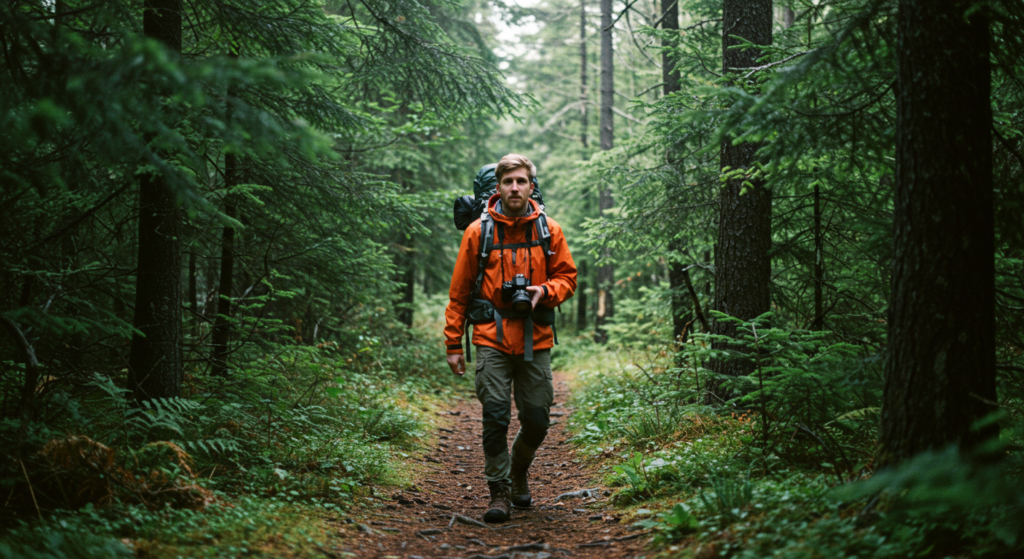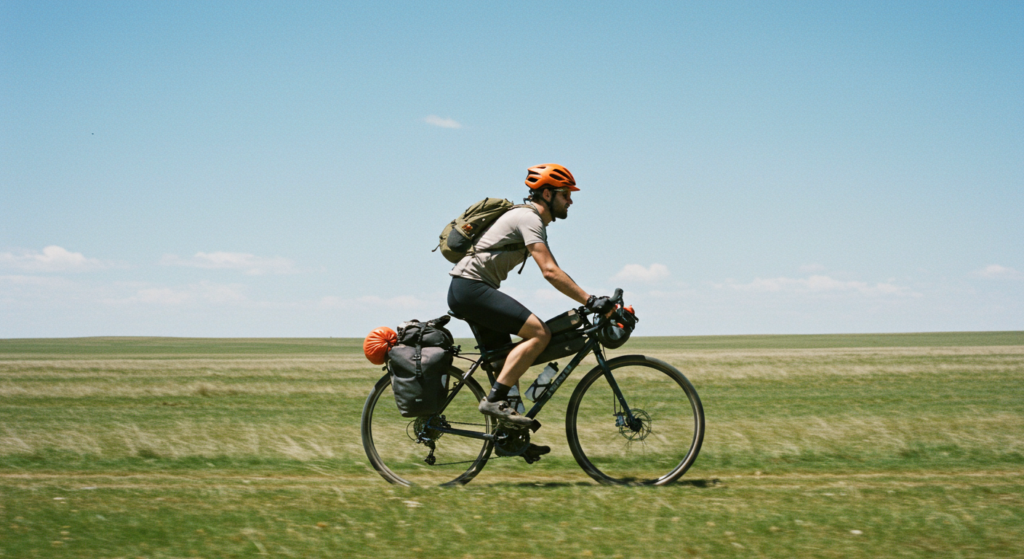Backpack Fit 101: How to Adjust Your Pack for Optimal Comfort
A backpack is more than just a vessel for your belongings; it’s a companion that, when properly chosen and fitted, can enhance your daily routines and outdoor adventures. Whether you’re navigating city streets, hiking rugged trails, or embarking on global travels, the right backpack ensures comfort, organization, and ease. However, selecting the perfect pack is only part of the equation. Ensuring it fits your body correctly is paramount to prevent discomfort and potential injury, especially during prolonged use. In this comprehensive guide, we’ll delve into the significance of proper backpack fit, essential factors to consider, and practical steps to achieve a personalized fit.
Why Proper Fit Matters

An ill-fitting backpack can lead to a host of issues, from minor discomforts to serious musculoskeletal problems. When a backpack doesn’t align with your body’s contours or distribute weight evenly, it can cause strain on your shoulders, back, and hips. Over time, this strain may result in fatigue, muscle soreness, and even long-term health concerns. Conversely, a well-fitted backpack enhances stability, reduces the risk of injury, and allows for greater endurance during activities.
Measure Your Torso Length First
The foundation of a well-fitted backpack lies in understanding your torso length. This measurement ensures that the backpack’s harness system aligns correctly with your body. To determine your torso length, locate the bony bump at the base of your neck, which is the seventh cervical vertebra. Then, find the top of your hip bones, also known as the iliac crest. Have someone measure the distance from the vertebra down along your spine to the point on your back that aligns with the top of your hip bones. This measurement helps you select a backpack that matches your torso, ensuring that the weight is properly distributed and reducing strain on your shoulders and back.
Adjust Shoulder Straps for Comfort
Once you’ve selected a backpack that corresponds to your torso length, fine-tuning the shoulder straps is crucial. Properly adjusted shoulder straps should fit snugly without digging into your shoulders and allow the pack to rest close to your back for stability. The load-lifter straps, situated at the top of the shoulder straps, should be angled between 45 and 60 degrees to help transfer weight off your shoulders and onto your hips. Regularly reassessing and adjusting these straps can prevent discomfort and maintain optimal weight distribution, making long treks and everyday use much more manageable.
Waist Belt: The Key to Load Distribution
The waist belt, or hip belt, plays a pivotal role in bearing the majority of the pack’s weight, thereby alleviating pressure from your shoulders. To adjust the waist belt, position the padded sections over the crest of your hip bones, then fasten and tighten the belt so that it’s snug but not restrictive. Ensure the buckle is centered, and the padding wraps comfortably around your hips. A correctly adjusted waist belt enhances balance and reduces fatigue, especially during extended activities, allowing you to move more freely without unnecessary strain.
Don’t Forget the Chest Strap
The chest strap, also called the sternum strap, connects the shoulder straps across your chest and provides additional stability. Proper adjustment involves sliding the strap up or down to a comfortable height across your chest, then buckling and tightening it to keep the shoulder straps in place without restricting breathing. This strap helps prevent the shoulder straps from slipping and maintains the pack’s position during movement, which is especially useful for activities like hiking, biking, or running with a backpack.
How to Pack Your Backpack for Maximum Comfort
Even with a well-fitted backpack, improper packing can lead to discomfort. Effective load distribution involves placing heavier items, such as water bottles or cooking gear, close to your back and centered to maintain balance. Medium-weight items should be packed around the heavier core to create a stable center of gravity. Lightweight items, such as clothing or snacks, can be stored in outer compartments for easy access. Thoughtful packing not only enhances comfort but also ensures quick access to essential items, reducing the need for unnecessary adjustments while on the move.
Step-by-Step Guide to Adjusting Your Backpack
When setting up your backpack for the first time, start by loosening all the straps, including the shoulder, waist, and chest straps. Load the pack with gear approximating the weight you’ll typically carry to simulate real-use conditions. Put the backpack on by lifting it using its haul loop and placing it on one shoulder, then the other. Lean forward slightly to position the pack’s weight onto your back. Once the pack is on, begin adjusting the waist belt first, then the shoulder straps, followed by the load-lifter straps and chest strap. Walk around and move your arms to assess comfort and mobility, making minor adjustments as needed to ensure a secure and balanced fit.
Practical Steps to Achieve a Customized Fit
- Initial Setup
- Loosen all straps (shoulder, waist, and chest) before putting on the backpack.
- Load the pack with gear approximating the weight you’ll typically carry to simulate real-use conditions.
- Donning the Backpack
- Lift the pack using its haul loop and place it on one shoulder, then the other.
- Lean forward slightly to position the pack’s weight onto your back.
- Adjusting the Waist Belt
- Position the waist belt over your hip bones.
- Buckle and tighten the belt, ensuring the majority of the pack’s weight rests on your hips.
- Securing the Shoulder Straps
- Pull down and back on the ends of the shoulder straps to tighten them.
- Ensure they are snug but not constricting, allowing free arm movement.
- Fine-Tuning Load-Lifter Straps
- Gently tighten the load-lifter straps to draw the top of the pack closer to your body.
- Aim for a 45° to 60° angle between the pack and shoulder straps.
- Adjusting the Chest Strap
- Position the chest strap at a comfortable height across your chest.
- Buckle and tighten it to stabilize the shoulder straps without impeding breathing.
- Final Checks
- Walk around and move your arms to assess comfort and mobility.
- Make minor adjustments as needed to ensure the pack feels secure and balanced.
Choosing the Right Backpack for Your Activity

Beyond achieving the perfect backpack fit, choosing a backpack that aligns with your specific activities and preferences is essential. Hikers and backpackers should look for packs with ergonomic designs, ample storage, and breathable back panels for ventilation. For cycling and commuting, a compact, aerodynamic backpack with reflective elements and secure straps is ideal. Travelers benefit from backpacks with security features, carry-on compliance, and organizational compartments. Photographers and tech enthusiasts need specialized packs with padded compartments for equipment and easy access points.
For Hiking
- Gregory Zulu 55: Praised for its ergonomic design and supportive suspension system, this pack is ideal for multi-day hikes.
- REI Co-Op Trailmade 60 Pack: A budget-friendly option offering comfort and ample storage for day hikes.
For Week-Long Expeditions
- Osprey Aether 65: Known for its exceptional load-carrying ability and adjustable suspension, this pack provides superior comfort and support for extended backpacking trips.
- Deuter Aircontact Core 70+10: Designed for durability and breathability, this pack features a flexible frame and expandable capacity, making it perfect for week-long adventures.
For Women
- Flash 55 Pack: Versatile and lightweight, offers a stable load with integrated suspension and an adjustable torso for all-day hiking comfort.
- Osprey Eja 38: The ultralight pack offers adjustable suspension, a comfy ExoForm harness, a removable lid, gear attachments, and ample storage.
For Everyday Use and Travel
- Peak Design 25L Outdoor Backpack: A versatile choice suitable for daily commutes and short trips, featuring a roll-top design and multiple pockets.
- SwissGear 1900 Scansmart: Combining style and functionality, this backpack offers ample space and organizational features, making it perfect for travelers.
For Photography and Tech Gear
- Peak Design Everyday Backpack: Designed with photographers in mind, this pack provides customizable storage and easy access to equipment.
- Timbuk2 Never Check Expandable Backpack: Ideal for tech enthusiasts, this backpack offers expandable storage and numerous compartments for gadgets and accessories.
Long-Term Comfort and Maintenance Tips
Even with a properly fitted backpack, it’s important to remain attentive to your body’s signals during prolonged use. Periodically reassess strap tightness and redistribute weight as needed to prevent pressure points and discomfort. If you’re carrying a heavy load, take breaks to rest your shoulders and hips, and incorporate stretching to relieve tension. Stay hydrated and nourished, as dehydration and fatigue can worsen the effects of an improperly adjusted pack. If you experience chronic discomfort despite making adjustments, it may be time to reconsider your pack’s fit or weight distribution.
- Regularly Check Fit
As you gain or lose weight, or as gear changes, your backpack fit may need adjustments. Periodically reassess strap tension and weight distribution. - Break In Your Backpack
If you’re using a new backpack, load it up and wear it around before taking it on a long trip. This helps identify potential discomfort points. - Keep It Clean and Maintained
Dirt, sweat, and grime can degrade backpack materials over time. Clean your pack regularly and store it in a dry, cool place. - Rotate Shoulder Straps During Long Carries
If carrying a pack for hours, shift the weight slightly between your shoulders and hips to prevent fatigue in one area. - Upgrade When Necessary
If your backpack consistently causes discomfort despite proper adjustments, it may be time for an upgrade. Technology and designs improve over time, offering better support and features.
Backpack Fit for Different Activities

Backpack fitting isn’t a one-size-fits-all process, and different activities require specific adjustments. Hiking and backpacking packs should have adjustable suspension systems to accommodate changes in terrain, while cycling packs must be stable and secure to prevent bouncing. Travel backpacks should prioritize comfort for long periods of wear, ensuring even weight distribution and ergonomic support. Selecting a backpack tailored to your needs enhances overall comfort and usability, making it easier to stay active without strain.
Hiking and Backpacking
Long treks require a backpack fit that balances weight efficiently to reduce strain on your body. Key considerations include:
- Ventilation: Many hiking backpacks feature mesh back panels to allow air circulation and minimize sweating.
- Hydration Compatibility: Look for backpacks with hydration sleeves or compartments to carry water bladders.
- Adjustability: A hiking pack should allow for fine-tuned adjustments to accommodate terrain changes.
Cycling and Commuting
Cyclists and bikepackers need backpacks that stay secure during movement. Essential factors include:
- Aerodynamic Design: Slim, compact packs reduce wind resistance.
- Waist and Chest Straps: These help prevent bouncing when riding on rough terrain.
- Reflective Elements: Increased visibility ensures safety when riding in low-light conditions.
Travel and Everyday Use
For travel, a comfortable backpack enhances mobility and convenience. Important aspects include:
- Security Features: Lockable zippers and hidden pockets deter theft.
- Weight Distribution: Well-balanced packs reduce strain during long airport transfers or sightseeing days.
- Carry-on Compliance: Choosing a backpack that meets airline size restrictions ensures hassle-free travel.
The Perfect Fit, Every Trip
A properly fitted backpack is more than a convenience, it’s essential for comfort, safety, and endurance. Whether you’re hiking, commuting, or traveling, taking the time to adjust your backpack correctly can prevent discomfort and injuries. By considering factors like torso length, strap positioning, and load distribution, you can customize your fit for optimal performance. With the right backpack and adjustments, every adventure becomes more enjoyable, allowing you to focus on the journey ahead rather than on discomfort.aily commute with ease. So take the time to get the proper backpack fit and enjoy the comfort and stability it provides.
